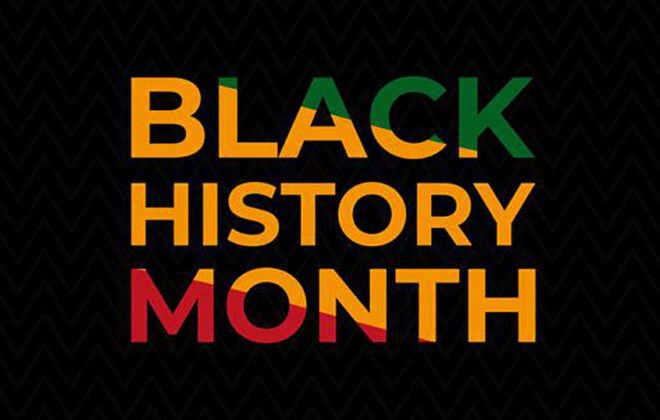5-Step Guide for Creating an Actionable Workforce Diversity Plan!
If your idea behind creating a workforce diversity plan is restricted to filling quotas or pitching yourself as an EEO employer to new clients, then you’ll be making the same mistake that 90% of organizations make. Creating an actionable workforce diversity plan is much more than just being compliant, it requires time, effort, and most importantly, it requires commitment from the managers and employees at an individual level.
An ideal workforce diversity policy is committed towards developing a workforce that reflects the communities you operate in, represents the clients you work with, and has equal space for under-represented groups like minorities, people with disability, women, and more. It should practice fair and inclusive procedures and stand tall on these four points:
- Provide equal opportunities to people from all communities
- Create a workplace that is inclusive and free of discrimination
- Train leaders to follow bias-free recruiting practices
- Promote you as an employer of choice among different communities
Step-by-Step Process for Creating a Workforce Diversity Plan
Following is the step-by-step practical approach for creating an actionable workforce diversity plan that matches your organization’s requirements.
1) Identify the Make-up of Your Organization to Highlight Improvement Areas
The first step is to identify the make-up of your organization in terms of ethnicity, age, and sex. If you have access to your organization’s EEO data then it can really help but since most professionals don’t have access to that data and holding employee surveys is simply out of question, you have to follow a more practical approach. To conduct practical analyses simply ask these 4 questions:
- Does your management largely comprise of employees from a particular community or religion?
- How many women do you have in senior leadership roles?
- How many veterans or people with disability (merit candidates) are on your payroll?
- Does your make-up resemble the communities or clients you serve?
The answer to all these questions will help you identify the under-represented groups in your workforce as well as identify departments that are over-represented by people from a certain community.
2) Participate in Community Development Programs
Collaborating with associations that work towards the representation of minority groups is a great way to attract and recruit more diverse candidates. Make sure you strengthen your partnership with local job agencies, minority universities, and also dedicate time in community development programs (Veterans Hiring, Women in Tech initiatives and more). You can also sponsor diversity and inclusion events and encourage your employees to volunteer in any one of these programs.
![]()
3) Look Beyond the Obvious When it Comes to Sourcing
Traditional channels like job boards and social media are not sufficient to meet your diverse recruiting needs. Expand your sourcing strategy and use diversity job boards (blacks, Latinos, Asians, etc.), diversity referral platforms, and targeted email campaigns. Organizations have reported some of the best results from diversity referrals so make sure you have a solid network for the same. Some of the best tools that you can use for diversity sourcing are TalentDome and Aevy.
4) Train the Leadership on EEOC Guidelines
The success of your workforce diversity policy would largely depend on the active involvement of the leadership. Train your managers on bias-free recruiting practices which are gender, race, and religion-neutral. Make sure they are trained on blind hiring, diversity-friendly job descriptions, consistent interview formats, and much more. Also, hold cultural awareness sessions which not only inform them about various cultures but also make the leadership adept in handling these differences.
![]()
5) Report the Outcome of the Plan in Annual Meetings
A workforce diversity plan that is not being monitored or improved iteratively is bound to fail. So develop a robust reporting mechanism and define the parameters that would define the success of your program. Some of the parameters that you can track include:
- Increase in the number of employees from under-represented communities
- Implementation of bias-free recruiting practices at the lowest level
- Active involvement of management in the execution of the program at a local level
- Increased employee satisfaction when it comes to a progressive and discrimination-free workplace
- Partnership with communities your organization feels connected with (women, veterans, etc.)
The only way to make your workforce diversity program actionable is by continuously training your leadership and HR team on diversity and inclusion initiatives. Be ready to learn from your mistakes, be patient, and make sure that you measure the outcome at each and every step.
Want a Customized Workforce Diversity Plan for Your Firm?
Tags In
Gary Ross
Related Posts
Subscribe For Updates
Categories
- Accountant
- AI
- Automation
- Awards and Recognitions
- Blue Collar Staffing
- Burnouts
- Campus Recruiting
- Cloud
- Co-Ops agreements
- Company Culture
- Compliance
- contingent workforce
- Contingent Workforce
- COVID-19
- Cyber Security Staffing
- Data Strategy
- Digital Transformation
- direct sourcing
- Distributed Workforce
- Diversity
- Diversity & Inclusion
- Economy
- Events & Conferences
- fleet industry
- Gig Economy
- Girls in Tech
- Global Talent Research and Staffing
- Government
- Healthcare
- Healthcare Staffing
- Hiring Process
- Hiring Trends
- Home Helathcare
- HR
- HR Practices
- HR Tech
- IT
- Labor Shortages
- Life Science
- Local Governments
- News
- Nursing
- Payroll Staffing
- Public Sectors
- Recruiting
- Remote Work
- Skill Gap
- SMB Hiring
- Snowflake
- Staffing
- Staffing Augmentation
- Staffing Challenges
- Talent ROI
- Tech Staffing
- Technology
- Tips & tricks
- Total Talent Management
- UI/UX Design
- Uncategorized
- Veteran Staffing
- Veterans Hiring
- Veterans Hiring
- Workforce Management
Recent Posts
- Automation in Recruiting: From Chatbots to Predictive Screening
- Gig Economy Expansion: The Impact on Talent Pools and Business Models
- Skills-Based Hiring: Why Credentials Alone Don’t Cut It in 2025
- Procurement 3.0: AI & Intelligent Automation in 2025
- Q3 Is Here: Is Your Contingent Workforce Strategy Falling Behind?
Newsletter
Archive
- September 2025
- August 2025
- June 2025
- April 2025
- March 2025
- December 2024
- November 2024
- October 2024
- September 2024
- August 2024
- July 2024
- June 2024
- May 2024
- April 2024
- March 2024
- February 2024
- January 2024
- December 2023
- November 2023
- October 2023
- September 2023
- August 2023
- July 2023
- June 2023
- May 2023
- April 2023
- March 2023
- February 2023
- December 2022
- November 2022
- October 2022
- September 2022
- August 2022
- July 2022
- June 2022
- November 2021
- October 2021
- September 2021
- August 2021
- July 2021
- June 2021
- May 2021
- April 2021
- March 2021
- February 2021
- January 2021
- December 2020
- November 2020
- October 2020
- September 2020
- August 2020
- July 2020
- June 2020
- May 2020
- April 2020
- March 2020
- February 2020
- January 2020
- December 2019
- November 2019
- October 2019
- September 2019
- August 2019
- July 2019
- June 2019
- May 2019
- January 2019
- December 2018
- November 2018
- October 2018
- September 2018
- August 2018
- July 2018
- June 2018
- May 2018
- April 2018
- March 2018
- February 2018
- January 2018
- December 2017
- November 2017
- October 2017
- September 2017
- August 2017
- July 2017
- June 2017
- May 2017
- November 2016
- October 2016




